If you’re 3D printing, you’ve probably encountered the dreaded “unprintable STL” problem: Your STL file looks fantastic, but it causes your slicer problems or results in strange misprints or complete failures. Whatever the exact reasons, the root of these issues often falls down to the mesh of connected triangular faces and vertices that STLs use to represent 3D models.
In an abstract, CAD environment, where models are created, almost anything is possible. However, the same can’t be said in the real world when models are printed. For example, a wall with 0-mm thickness can exist in software but not on your build plate.
That’s where STL repair tools come in. They help you identify and fix these issues, resulting in a model that is manifold. They range from free, hobbyist-friendly tools to complex, commercial tools designed for professional use.
In this article, we’ll quickly cover the most common types of issues you might encounter, explain how they can be repaired, and then compare several of the best tools to make even the most wayward of STL files printable.
Reasons for Repair
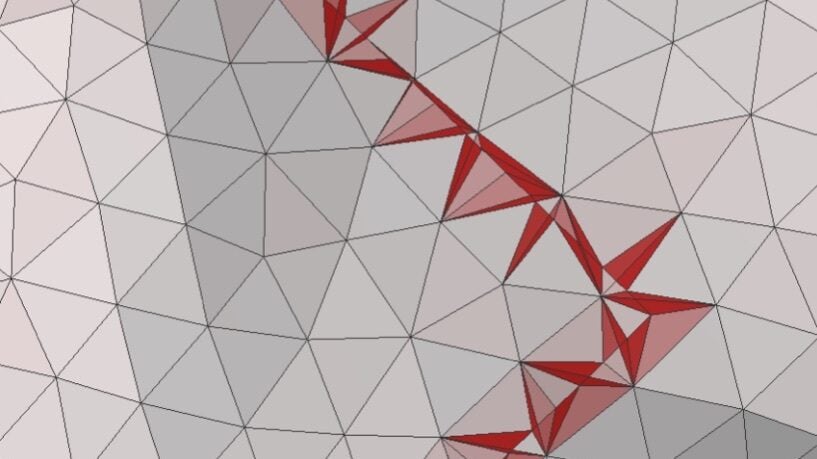
A typical STL file may contain tens of thousands of tiny triangles. Depending on the design, there are many different ways in which these triangles can be misrepresented (from a manufacturing perspective).
Therefore, let’s take a 30,000-foot view of some common types of errors that might result in unprintable files and the problems that need to be fixed.
Holes
In order to exist in the real world, a 3D model needs to describe an enclosed or “watertight” volume, with all of its vertices’ edges and vertices connected. Yet, an STL can sometimes have small holes in the mesh, or perhaps triangles have edges that aren’t connected to their neighbors. Both can lead to issues when printing.
On a related note, each triangle notionally points into or away from the shape it describes, essentially having inside and outside faces. Occasionally, this orientation is flipped, causing problems in how a slicer interprets a complete surface.
Overlapping Geometry
3D models usually consist of combinations of different shapes. The way these shapes (or the “shells” of these shapes) are joined is important and, if done incorrectly, can hinder slicing. A related problem occurs when an edge or vertex is shared by one or more shape.
This can be a mind-bending concept, but consider how a modeling program might represent two intersecting cubes. Unless these two shapes are eventually interpreted as one object, your printer will have difficulty printing them together.
Noise
Some STLs can contain floating triangles that shouldn’t be present. Triangles may also overlap or intersect in a way that is hard or impossible to interpret.
Complex Geometry
There’s a thin line between an STL that has actual errors in its mesh and one with a correct mesh that describes something that’s hard or impossible to print. For example, attempting to represent hair or fur might result in an enormous STL (because of the many triangles required to represent such a “surface”), which is hard to process due to details smaller than a printer’s resolution.
Related to this, an STL may describe enclosed volumes that are too thin to be printed practically.
Fixing these types of issues is better described as an optimization step rather than a repair, although both are often handled by the same software.
How to Repair an STL File

Repairing STL files can be very similar to repairing photos. Photo editing tools often have an automatic option that fixes an image with a single click. This may be good enough in some cases, but certain images will need more in-depth improvements, and professionals may opt for advanced editing software to get the quality they want (short of re-shooting).
The same situation exists for STLs. Repair tools are available to “auto fix” files, and while these can work, they often don’t. Sometimes they even provide unexpected results (like when holes that should be part of a model get filled in). Other tools provide detailed analysis and fine control over repairs, but in extreme cases, there may be no option but to go back and edit the original 3D model.
A typical STL repair and optimization workflow might look as follows:
- Auto mesh repair: It always makes sense to at least try a simple, automatic fix. In many instances, this will be adequate, but in others, the original STL may be too large or broken to process this way. Worse, the “repair” may alter important parts of the design.
- Manual mesh repair: If the auto fix doesn’t work, look for a more advanced tool. Start with repairing holes or gaps in a way that preserves your 3D model. Then, choose options to fix other geometry issues. If problems persist, you can try re-meshing the entire model or use options such as “make solid” or “shrink wrap” (depending on the tool).
- Re-modeling: If both of the above steps don’t work, you’ll probably need to re-edit the 3D model using CAD or other 3D modeling software.
- Optimization: This step isn’t always necessary and may vary depending on the type of 3D printer you’re using. Typical actions include thickening thin sections or hollowing out otherwise solid shapes. You can also try “resizing” an STL so that it has enough triangles to avoid obvious faceting on the 3D print but not so many that the file is too large to process.
STL Repair Software
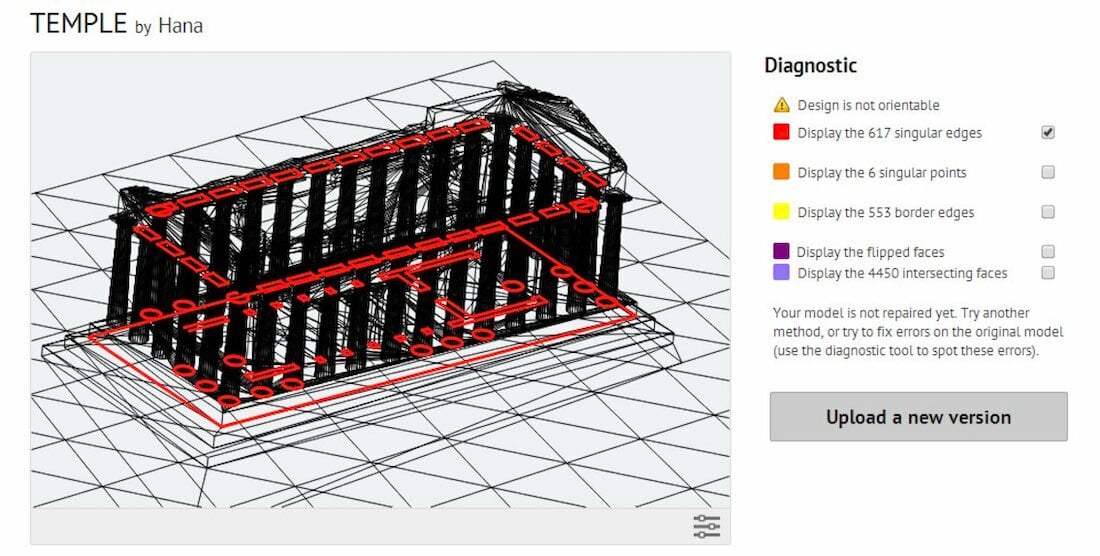
Tools available for STL repair have changed significantly over the past few years. Once popular tools are no longer available, while others have become integrated with commercial workflow systems, especially those intended for professional 3D printing.
Generally speaking, STL repair software falls under three broad categories:
- Dedicated, free, or open-source tools are available to use online or offline, and these remain popular choices.
- Slicer software is also increasingly embedding analysis and repair tools that can handle many issues. For those who need more or better control (or faster processing), many sophisticated offers are available at a cost.
- CAD and 3D modeling programs often provide repair functionality. These are often the best options for those who do their own designs or remixes.
We’ll look at each of these types of software in turn, but it’s worth noting that virtually all commercial 3D printing services have their own built-in repair and optimization tools. These services have a vested interest in ensuring that STL files are printable and trouble-free, so investing in quality tools is important to them. In most cases, this functionality is part of a proprietary workflow, where you can’t download the repaired STLs, so we won’t be covering them here.
Free Online & Offline Tools
Standalone, browser-based, and desktop tools are the “traditional” way to repair STL files. They range from simple “automatic” options to sophisticated solutions offering full manual control over virtually every aspect of STL fixing.
FormWare
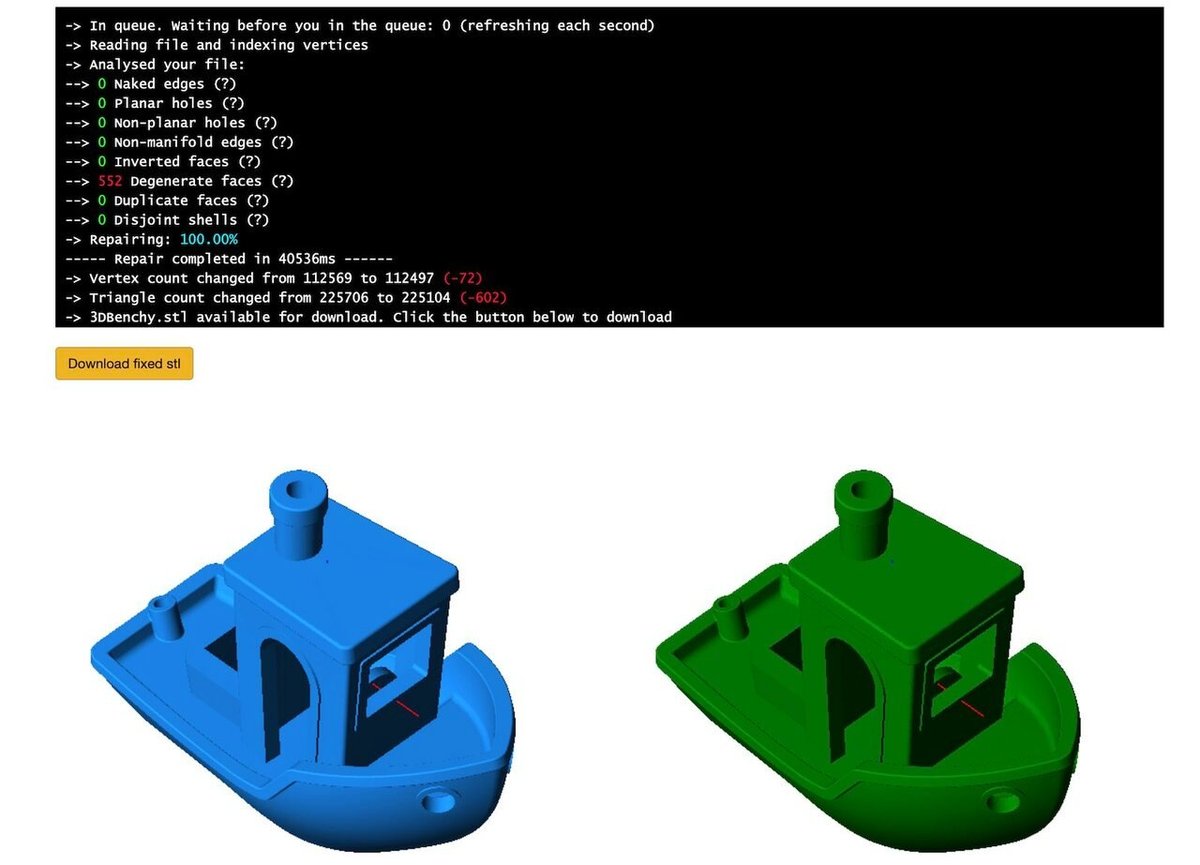
FormWare produces a commercial, full-featured slicing tool focused primarily on resin-based printers, and it contains a powerful analysis and repair engine. That engine is also available online for free, and it’s very easy to use.
During analysis, the tool lists detailed results, highlighting how many times each error type has been found, before making appropriate repairs. As with most good repair software, it even identifies issues with the veritable Benchy STL file!
It has a timeout of four minutes of processing time, which should be more than enough for all but the largest and most damaged STLs.
- Platform: Browser (online)
- Cost: Free
- Ideal for: Anyone requiring high-quality STL repairs
- Available from: FormWare
Aspose
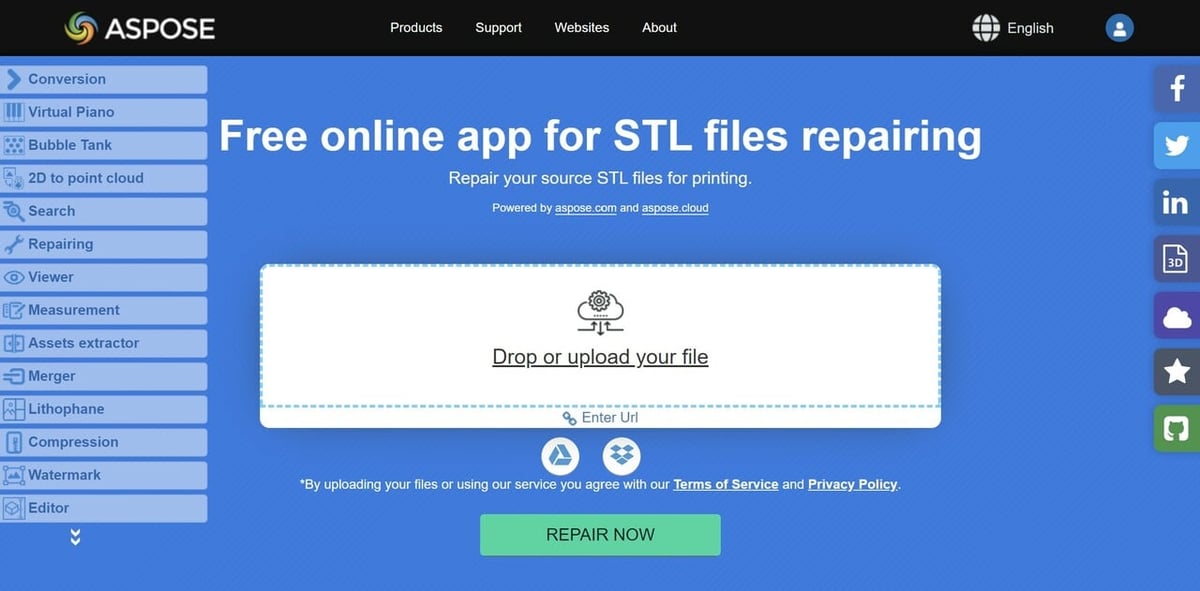
STL repair is a computationally-intensive process. It’s often the case that a dedicated program must be downloaded and kept on a user’s computer specifically for file repair purposes. Not only can this take up a significant portion of memory, but it can also take a very long time to actually open on the computer. Enter Aspose.
Aspose, the dedicated, free online app for STL file repair, solves both of these problems by being a completely browser-based STL file repair service. Provided that a user has a stable internet connection, files can be uploaded and repaired with only a few clicks. This ease of use makes it a great website to keep in a browser’s bookmarked sites, allowing any STL file repair to be just a few clicks away at any given time.
Also, in case there’s doubt over the quality of the repaired STL, Aspose generates a 3D file preview for users to check and ensure that the file has been successfully repaired, all from the web browser.
- Platform: Browser (online)
- Cost: Free
- Ideal for: Anyone requiring fast, simple STL repairs
- Available from: Aspose
MeshLab
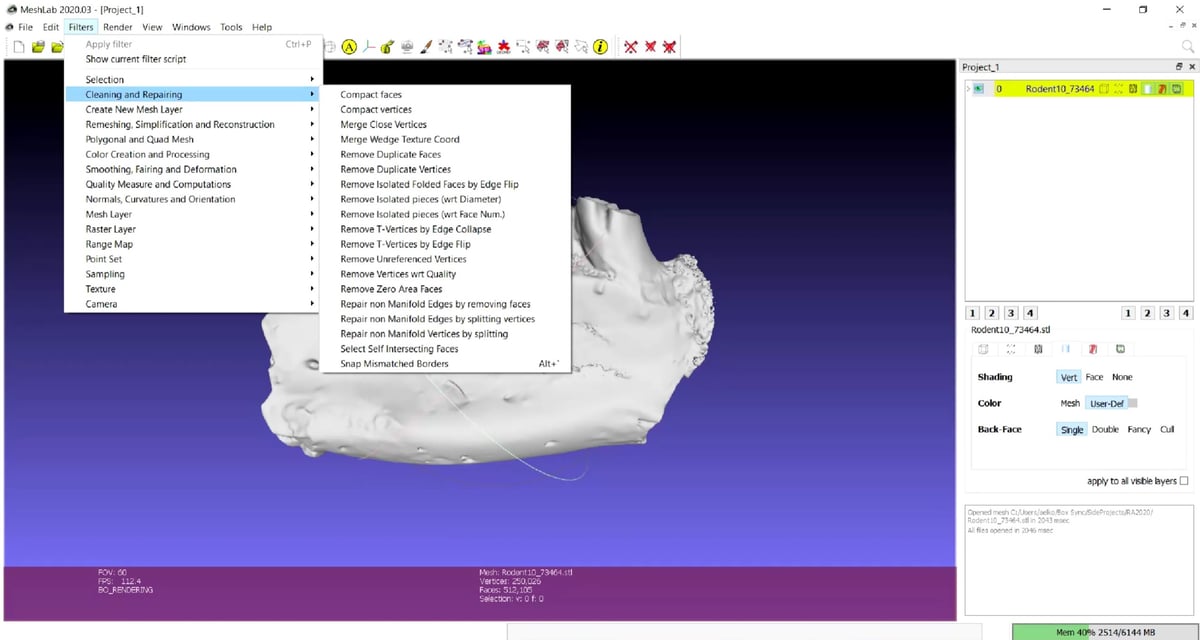
MeshLab, in stark contrast to simple services, offers a fantastically rich toolset that enables detailed control over editing, cleaning, healing, inspecting, rendering, texturing, and converting 3D triangular meshes, including STL files.
It’s an open-source solution in constant development, and its focus is on processing models produced by 3D scanning and digitization tools. It can handle very large STLs, which often defy other solutions, and it’s also useful for effectively combining more than one mesh.
A decent level of knowledge is required to understand and make the best use of the user interface, but for simple STL repairs, we’ve covered the basic steps in our STL repair tutorial.
- Platform: Windows, MacOS, Linux
- Cost: Free
- Ideal for: Experienced makers requiring advanced STL repairs
- Available from: MeshLab
3DPrinterOS
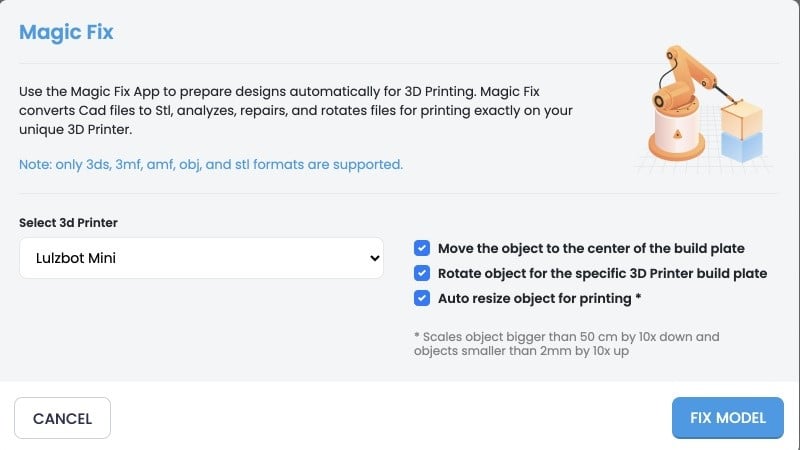
3DPrinterOS is a comprehensive cloud-based toolset for managing multiple 3D printer workflows. It allows businesses or educational establishments to manage their own printers as well as contract printing services.
To ensure that objects are printable, 3DPrinterOS uses a function called “Magic Fix” to analyze STL files and make any necessary repairs. When doing so, it also takes your printer and other factors into consideration and produces a fixed version of your STL, properly scaled and oriented. This revised STL is saved in your default workflow and can be downloaded by clicking on the file name.
- Platform: Browser (online, optimized for Chrome)
- Cost: Free repairs, trials for other functionalities
- Ideal for: 3D printing hobbyists interested in broader workflows
- Available from: 3DPrinterOS
Slicer-Based Repair Tools
In recent years, slicers have become more proactive at identifying and fixing problematic STL files. We can likely expect to see this trend continue as the quality of 3D model slicing and printer optimization increases. Such functionality is pretty much expected, especially among paid options, as free options are constantly catching up.
Below, we take a brief look at a few popular slicers and how they currently handle STLs in need of repair.
Cura
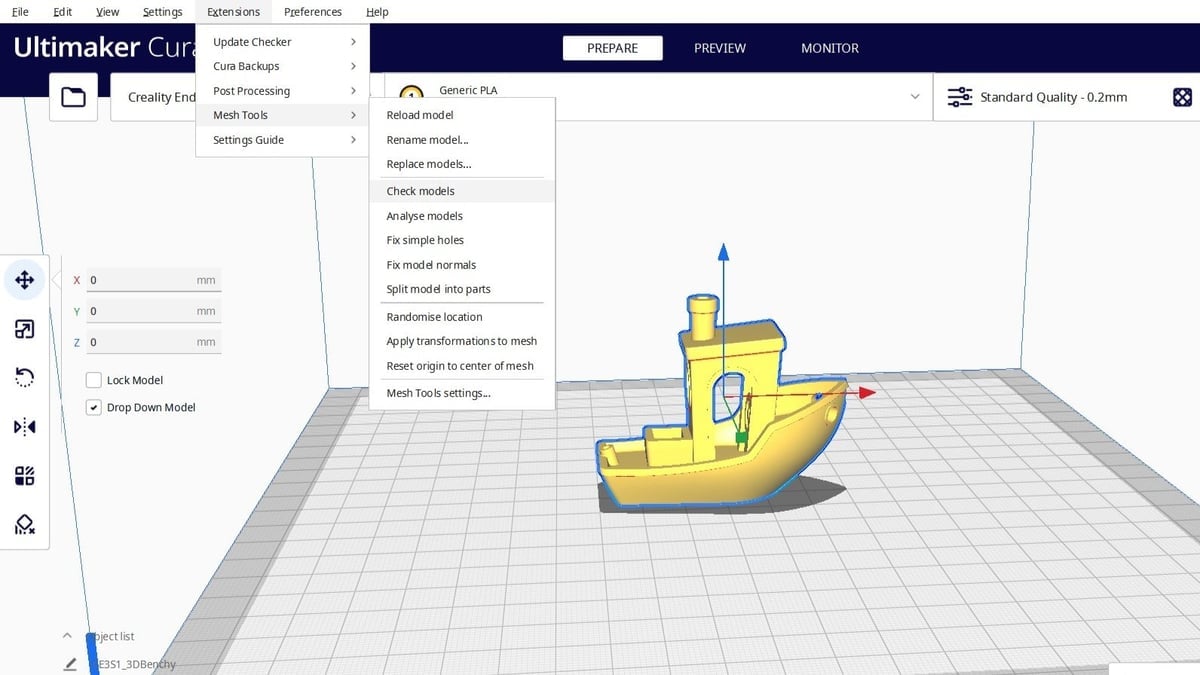
UltiMaker’s Cura is the most established of the free-to-use slicers and has had the ability to identify many common STL issues for some time. Nowadays, it’s able to fix many of them, and the list continues to grow. Indeed, it’s worth periodically looking at the most up-to-date documentation or exploring the “Mesh Fixes” settings to see what’s current.
In addition to the slicer’s base functionality, a plug-in called “Mesh Tools” (available via the “Marketplace” in the top right-hand corner of the UI) adds extra features to check STL files when they’re loaded. Handily, the plug-in also fixes simple issues.
If you’re using Cura, it’s at least worth experimenting with these options, as in many cases, they will eliminate the need to resort to other repair tools.
- Platform: Windows, MacOS, Linux
- Cost: Free
- Ideal for: Experienced Cura users
- Available from: UltiMaker
PrusaSlicer

PrusaSlicer will identify most STL issues and automatically repair defective models to a certain degree. However, that functionality is heavily based on the 3D printing API built into Windows (which in turn is based on the original Netfabb).
If errors are detected and flagged when loading a new STL file, there are two options for making repairs: right-clicking on the displayed warning icon or selecting “Fix by Netfabb” on the model menu. This doesn’t offer the granularity of Cura, but on the other hand, it does make use of well-established functionality, which has proven to be effective most of the time.
Again, it’s worth keeping an eye on the most up-to-date technical details for the latest developments in this area.
- Platform: Windows (full repair functionality); MacOS and Linux (limited functionality)
- Cost: Free
- Ideal for: Windows PrusaSlicer users
- Available from: Prusa Research
Simplify3D
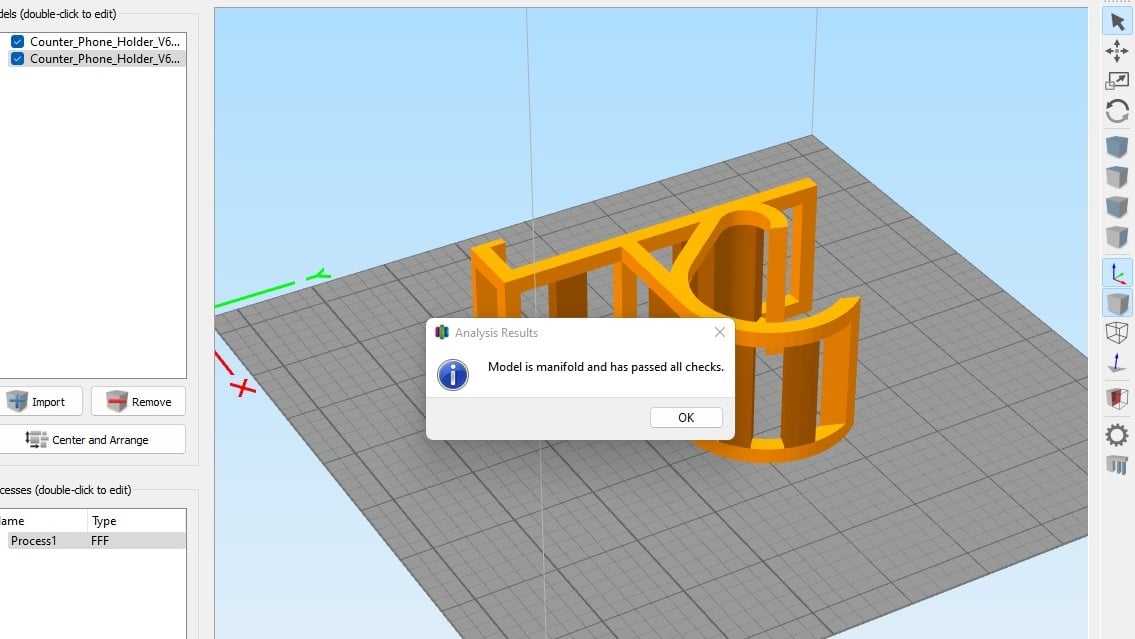
Simplify3D explicitly highlights its capabilities for mesh analysis and repair. It has sophisticated functionality to cover virtually every repair scenario.
This includes several built-in tools to help you identify and fix common mesh issues so that you can get back to printing quickly, usually without having to resort to even the more powerful, value-adding tools.
- Platform: Windows, MacOS, Linux
- Cost: ∼$200; two-week free trial
- Ideal for: New and existing Simplify3D users
- Available from: Simplify3D
NanoDLP
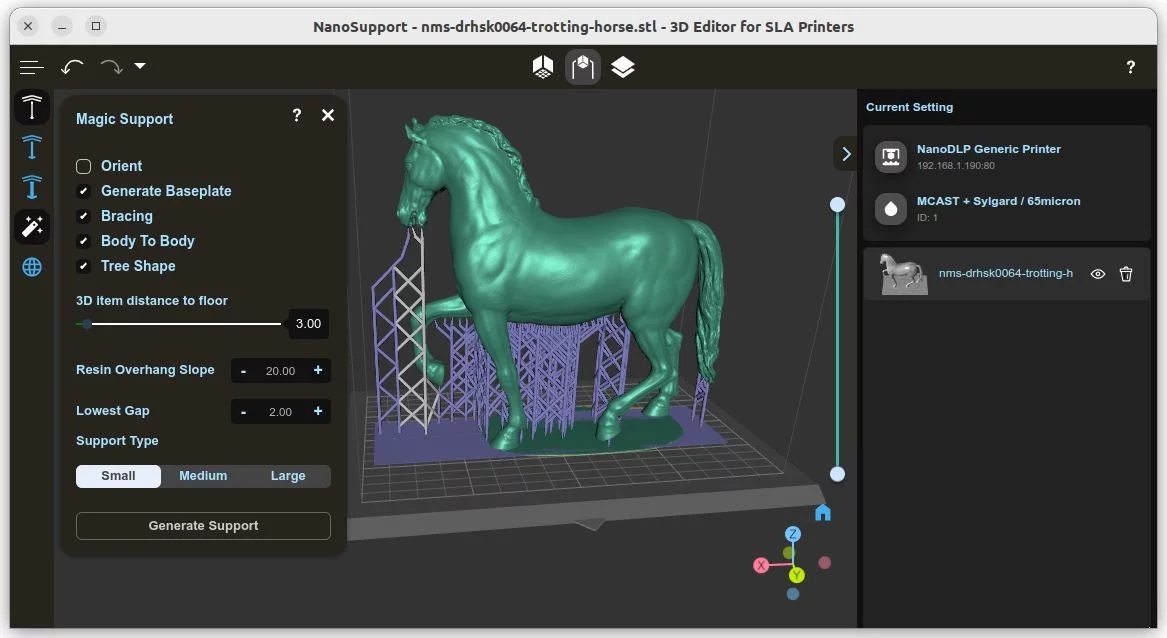
Dedicated to providing resin 3D printer owners with a comprehensive suite of resin printing software tools, Nano 3D Tech’s NanoDLP would be remiss not to provide an STL file repair tool as part of its program.
NanoDLP is a 3D printer management system meant to enable one-click 3D printing. By running the 3D printer as a server on either a typical Windows, Mac, or Linux machine or on a Raspberry Pi (with a freely-available, downloadable disk image), files can be uploaded, repaired, sliced, and printed all within the NanoDLP browser-based slicing platform.
NanoDLP’s print preparation tool, NanoSupport, allows users to prepare (and fix!) a 3D file for 3D printing on a NanoDLP-driven 3D printer. Integrated with the positioning and hollowing tools, the built-in STL repair tool gives makers the opportunity to quickly fix any last-minute errors on an imported STL.
For the maker looking for a quicker, non-downloadable solution, Nano 3D Tech also offers a browser-based version of their STL file repair engine. This web-based solution is based on the same code used in the NanoSupport STL repair tool.
- Platform: Browser (UI); Windows, MacOS, Linux, Raspberry Pi (printer host)
- Cost: Free
- Ideal for: LCD and DLP 3D printer owners needing last-minute repairs before slicing
- Available from: Nano 3D Tech
CAD & 3D Modeling Tools
You may think that any tool designed to create and edit 3D models should also have the ability to reliably identify and fix STL errors. However, this isn’t always the case.
Yet, several tools are well-regarded when it comes to checking and repairing STL files. They also have the advantage of being able to handle special cases, for example when the underlying design requires changes.
In the following sections, we highlight four different popular and free solutions.
Meshmixer
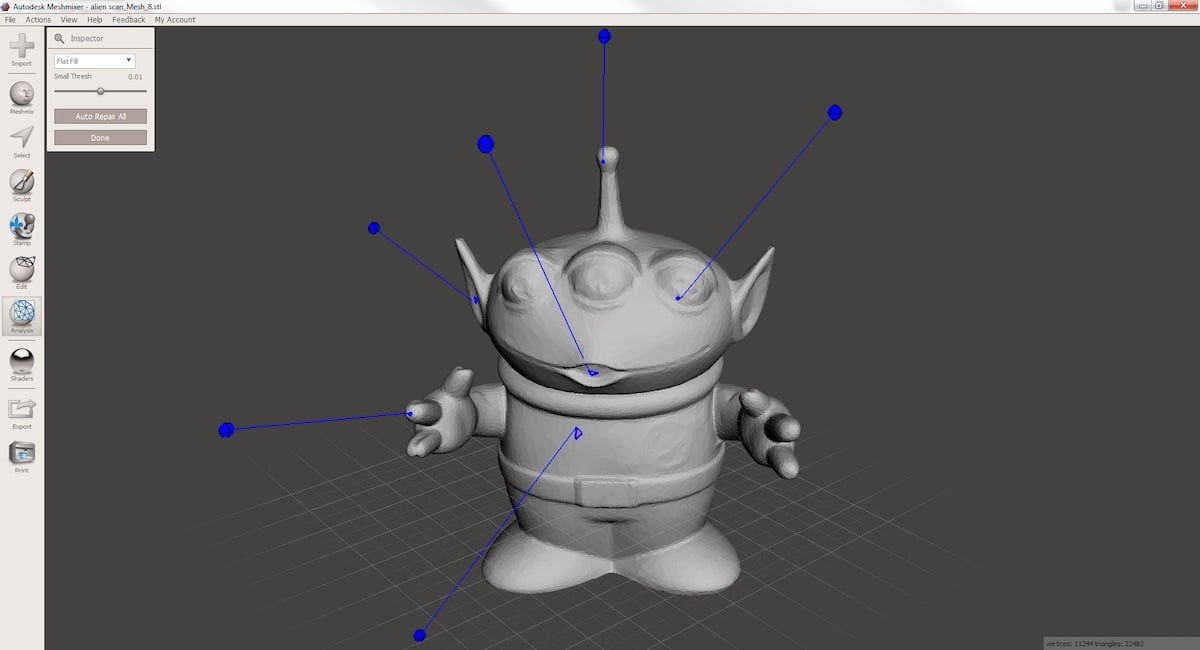
The self-described “Swiss Army Knife” for 3D meshes is more than a simple STL repair tool. Meshmixer is a fully-fledged modeling solution capable of hollowing, scaling, and mesh simplification.
This is no beginner’s tool, and it’s consistently ranked among the best tools for STL repairs. It supports several highly regarded repair and fixing functions, including the famous “make solid”, and offers the near-limitless ability to enhance and change a model’s original design.
Another big plus is the wealth of information available on the internet. Looking around, it’s not hard to learn about the various repair tools available in Meshmixer, including their pros and cons. And if you’re a fan of the CAD-CAM tool Fusion 360, Meshmixer’s (as well as Netfabb’s) mesh repair functionality is built-in.
It’s worth noting that Meshmixer is no longer developed and supported by Autodesk, but it’s still available for download.
- Platform: Windows, MacOS
- Cost: Free
- Ideal for: 3D printing hobbyists who 3D model
- Available from: Autodesk
3D Builder
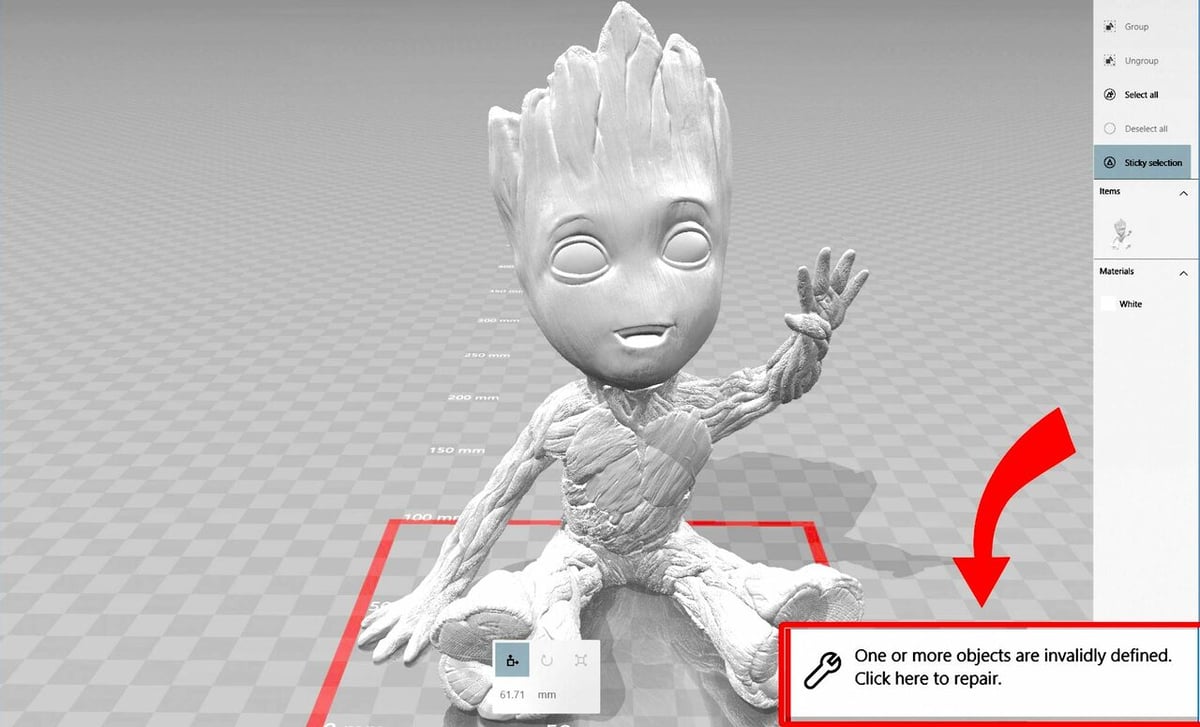
3D Builder is Microsoft’s free 3D modeling software for Windows and other Microsoft platforms. Primarily intended as an easy-to-use solution for simple modeling – and even 3D model scanning using a webcam – it also includes capable STL repair functionality to ensure that your 3D models are printable.
3D Builder allows for more granular control than more basic or simple programs.
- Platform: Windows
- Cost: Free
- Ideal for: Anyone 3D modeling or editing simple parts
- Available from: Microsoft
FreeCAD
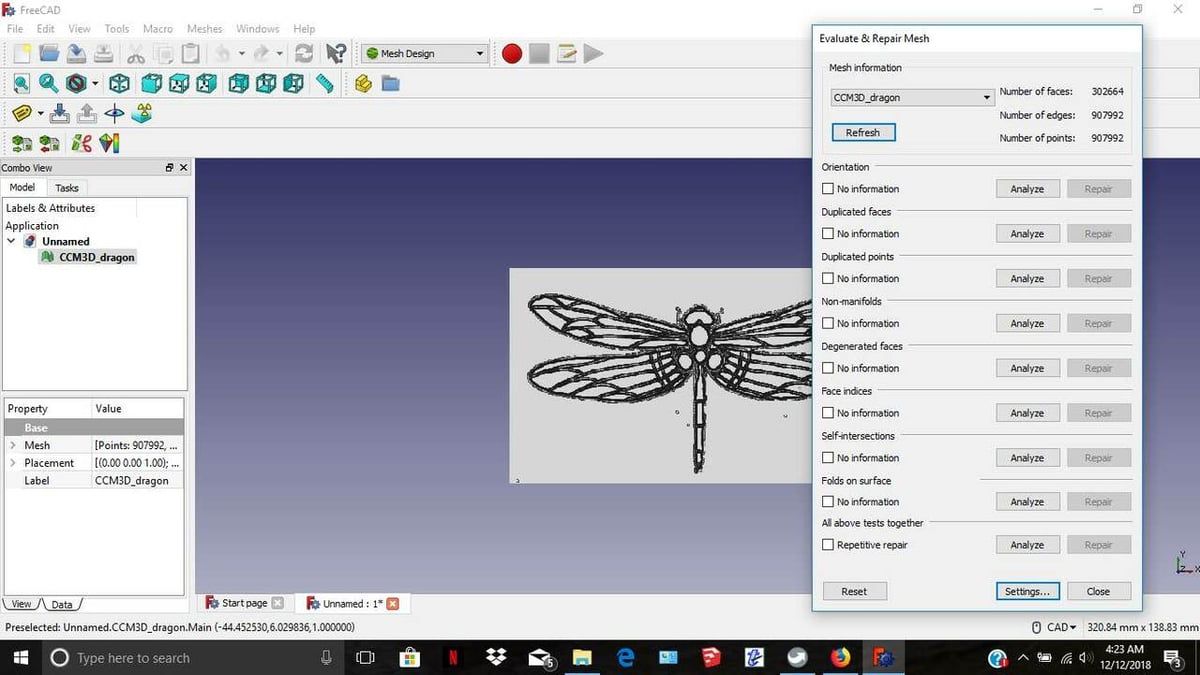
FreeCAD is an open-source 3D modeling program that was initially designed with the needs of mechanical engineering and product design in mind. Among the many features of this program are capable analysis and repair tools.
If you’re looking for a tool that gives you a high degree of control over your work, then FreeCAD may be the way to go. As with the other CAD programs, one advantage of this approach is the ability to not just repair STL files, but also make other changes and modifications that may be required.
- Platform: Windows, MacOS
- Cost: Free
- Ideal for: Experienced makers who prefer classic CAD functionality
- Available from: FreeCAD
Blender
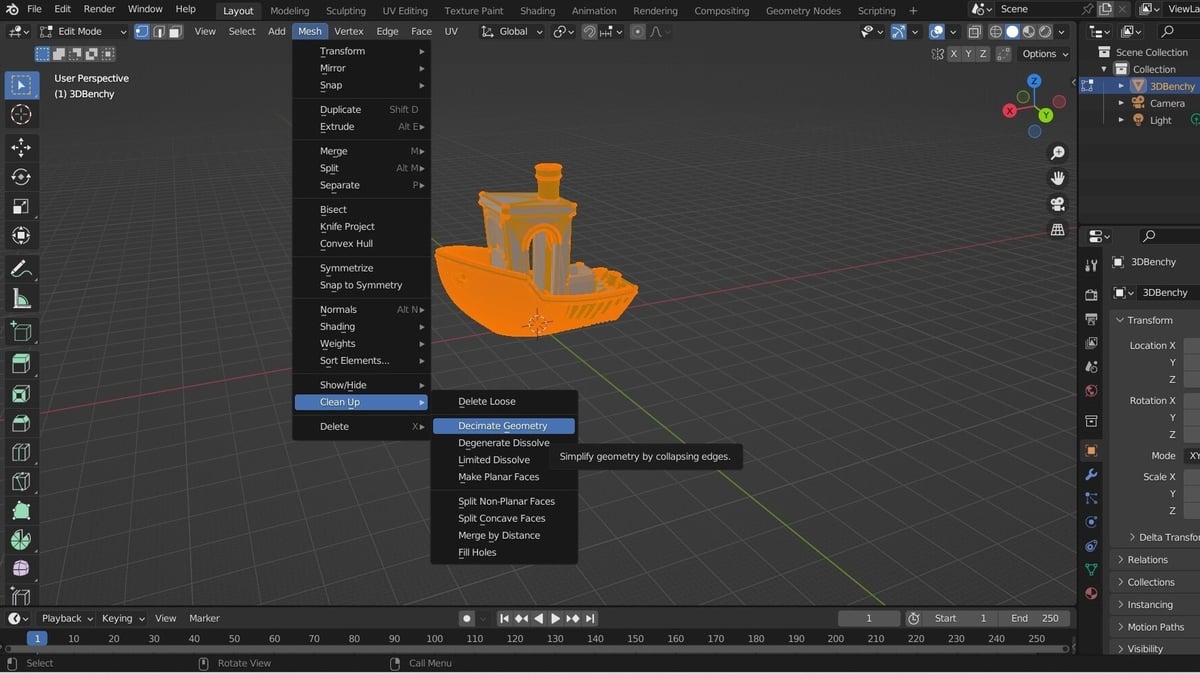
Blender has become the de facto standard tool for 3D modeling and animation. It should come as no surprise, then, that a tool focused on manipulating and managing mesh models offers powerful capabilities for fixing problematic STL files.
Yet this sophistication comes at a price: Blender isn’t well-suited for beginners, and the learning curve can be steep. However, for those looking for a well-supported, open-source tool capable of tackling almost any mesh modeling challenge, this program is worth considering.
- Platform: Windows, MacOS
- Cost: Free
- Ideal for: Experienced makers who prefer sophisticated software
- Available from: Blender
Value-Adding Tools
If simple STL fixes won’t work, you can waste a lot of time tracking down and remedying the problem. In business, time is money, so having the best possible tools can be worth paying for.
The bonus of commercial tools is that they typically come with a great deal of additional functionality, often including sophisticated tools for optimizing and preparing 3D models for perfect printing. Most of these value-adding tools also have the ability to edit the underlying models.
Netfabb

Netfabb is among the best-known software for repairing STL files. It was one of the earliest solutions in the space and, in one form or another, has endured as either a standalone solution or as an embedded feature combined with other solutions, including Microsoft’s 3D printing software.
Acquired by Autodesk in 2015, Netfabb’s Standard version has since been discontinued for new customers, but renewals are still available for those who previously owned it. All hope is not lost, as it’s offered in Premium and Ultimate versions integrated into the popular CAD and CAM tool Fusion 360, and a license for Netfabb is included in the Fusion 360 Pro Bundle. These advanced versions offer valuable feature sets, including post-processing preparation and lattice optimization. Netfabb Premium or Ultimate can be tested with a trial, after which it will revert to Netfabb Basic.
The original free version can still be downloaded from an unofficial GitHub repository. However, it hasn’t been updated since 2015.
- Platform: Windows
- Cost: ~$5,100 per year for Premium; price upon application for Ultimate; free trial; included with the Fusion 360 Pro Bundle
- Ideal for: Professionals requiring versatility and Fusion 360 integration
- Available from: Autodesk
LimitState:Fix
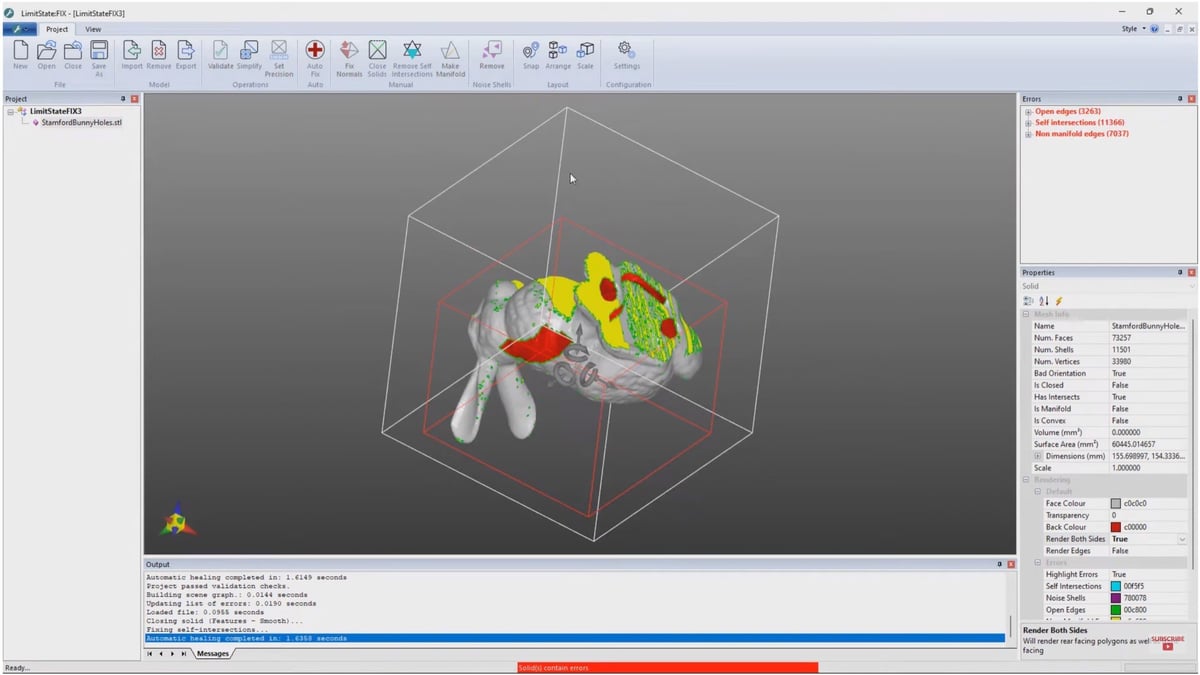
LimitState:Fix is another professional STL repair tool with a significant price tag. According to the website, it “fixes the 3D models other tools can’t!”
Besides its auto-fix capability, the program allows granular control over repair options for closing solids, correcting non-manifold errors, and fixing the orientation of polygons. It also has features to enable users to merge STL files, remove noise shells, and simplify meshes.
LimitState uses robust Polygonica technology, a well-established professional 3D modeling solution used in the industry.
- Platform: Windows
- Cost: ~$380/year (1 license); ~$700/year (2 licenses); ~$1,500/year (5 licenses)
- Ideal for: Professionals requiring reliability
- Available from: LimitState
Materialise Magics
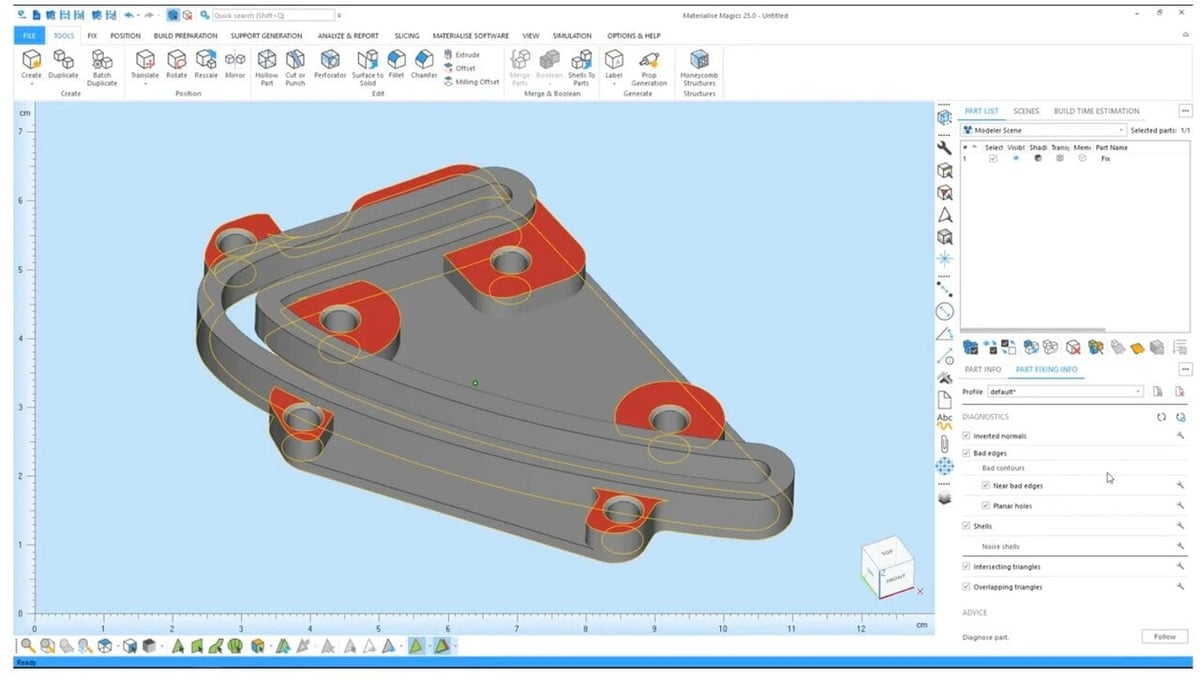
Materialise’s well-regarded analysis, repair, and optimization tool has evolved rapidly in recent years. They continue to offer a free STL viewer, MiniMagics, which also performs a detailed analysis of STL issues. However, their sophisticated repair and editing functionality requires a license.
Two capable and advanced versions are on offer. Magics Essentials provides functionality best suited to small businesses and keen hobbyists, while the full Magics suite offers additional advanced tools (including support optimization) for busy professionals. Both are integrated within a wider suite of software supporting every aspect of modern, commercial 3D printing.
Each tool has three modes of STL repair, including full auto, a fix wizard (which guides users through each step), and a full manual tool. Other features include a “shrink-wrap” function to provide minimal thickness to parts and fix other surface issues, and a host of enhancing and optimization capabilities. The user interface is well-designed and easy to use, and levels of user satisfaction are high.
- Platform: Windows
- Cost: $150-$190 per month for Essentials; price upon application for Standard or Advanced; 30-day free trials of all versions
- Ideal for: Professionals and businesses requiring a powerful solution and the potential for expansion
- Available from: Materialise
License: The text of "STL Repair (Online & Offline): The Best Software" by All3DP is licensed under a Creative Commons Attribution 4.0 International License.









